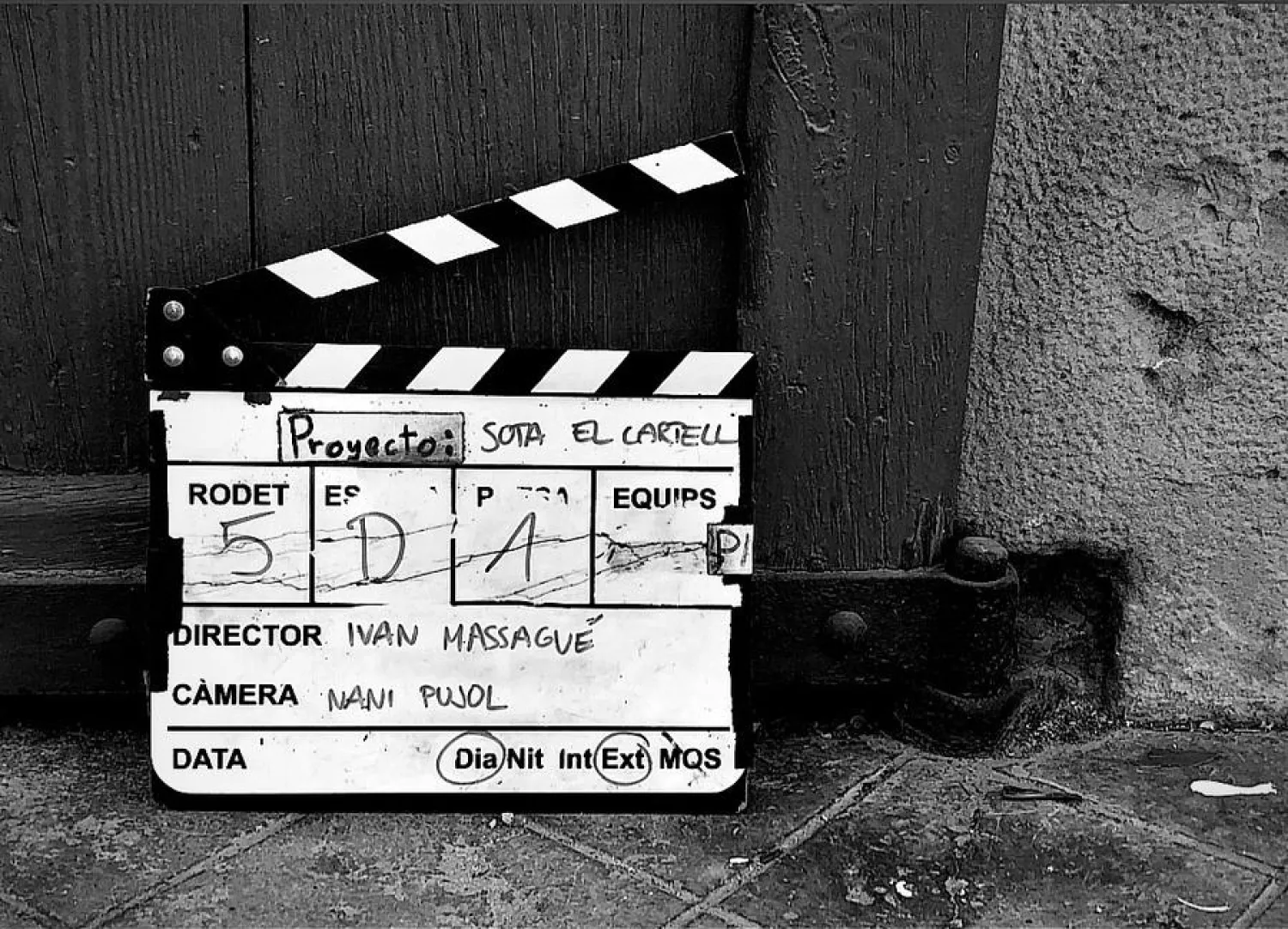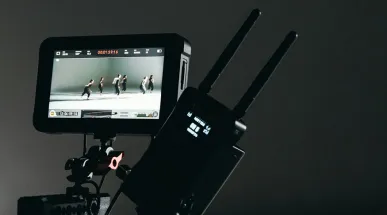3 Simple Steps To Discover Your Film Job
If your passion for film goes beyond just watching movies, you won't want to miss these 3 simple steps to identify your ideal department within filmmaking.
- Would you like to be the next nominee at the Sitges Film Festival?
- Would you like to bring your stories to life or participate in the stories of others?
- Are you curious about how films are made and how you can fit into them?
- You know you want to go into film, but you're worried about whether you'll make the right career choice?
We understand how you feel - film is our passion, too. In fact, we have been training film industry professionals with different artistic profiles and in different professional profiles for more than 10 years. Below you will see 3 steps to identify what is your profile and what training you should follow.

STEP #1: UNDERSTAND THE PHASES OF A FILM.
It is essential to start from a base and the main thing is to understand how films are made. To make it easier to understand, imagine that the film was a "product" of a factory, right? Yes, it is. You must know that this "factory" (Production Company) only makes "products" on demand and totally customized. For each "product" that is made, machines and dynamic work systems must be created and specialized departments must be hired to bring their skills to the production of the "product". Which means that every "product" the "factory" makes will be totally unique.
Now, for that product to see the light of day it has to go through 5 phases: Development, Pre-production, Production, Post-production and Distribution.
Phase 1: Development: "Where it all begins"
Before there is even a film, shooting or rehearsals. A creative idea is needed that gives rise to the development of the whole cinematographic machinery. This idea is germinated into the feature film script. With the script in hand, it is time to look for those who make it possible to make this film: The Producers. They will have to assess the basis of the project in order to approve it, seek financing, create and manage the technical team and mark the steps prior to the next phase: Pre-production.
Phase 2: Pre-production: "What do we need? Who do we need? Where will we do it? When will we do it?..."
In this phase, the product has gone from being a simple sketch/idea to being the guide that marks which machinery we will need to buy, which personnel we need and which system we must follow. In other words: pre-production is the phase prior to shooting.
The first thing to do is to gather all the artists and department heads -we'll talk more about this in step #2-, give them the script so they can internalize the story and hold meetings to unify the overall vision of the film. Each of the Team Leaders contributes his or her bit. Whether for creative, economic or technical decisions. From here, each department will begin to grow in time and order available to the Assistant Director.
Each department will have the responsibility to break down and detail the needs they have or expect to have for the next phase: Production.
Phase 3: Production: "The moment to give it all"
At this point, a script has been developed, a management team has been assembled, the needs of each department have been determined, preliminary preparations have begun and now it is time to start up the production line of the "factory".
Depending on the "product" (the pages of the script, production logistics and other factors of the story itself) the process of materializing the ideas conceived in the script and transforming them into footage will begin, which will then be treated to shape the film's editing. This process can last from 6 to 18 months.
Here both the technical team (Crew) and the artistic team (Cast) are involved. All the preparations made in Pre-Production are carried out under an overall order that is laid out in the shooting plan organized between the AD and/or the Production Manager.
All the material generated is stored, classified and reviewed by the DIT under the indications of the Script Supervisor so that it can be correctly passed to the Editing Department who will have to develop the 1st stage of the next phase: Post-production.
Phase 4: Post-production: "Where everything comes to life and makes sense"
This is the last step before the film sees the light and you can enjoy it. Here all the details of the raw footage will be polished. Starting with the editing that will result in the editing of the film, then it will follow some transversal processes that will include processes of Sound Postproduction (Sound Design, Soundtrack Creation, Mixing and Mastering), the creation of VFX and Compositing processes, Color Correction, integration of Motion Graphics for the scenes that need it and for the opening and closing credits.
After going through these Postproduction processes all the material generated by each department returns to the editing department to finish assembling the final piece that will be used in the last phase: Distribution.
Phase 5: Distribution: "It's time to show it to the world"
Back to the factory metaphor, once the product has been manufactured and passed through all the quality controls, it is time to promote and market the product so that everyone can consume it. That is why the "factory" (Producer) contacts a commercial agency (Distributor) so that the latter is the one in charge of exploiting the distribution and diffusion channels.
That is, during distribution, a series of marketing and communication initiatives and actions are launched to generate interest in the film. Trailers, Teasser, Posters and Infographics are created to help support communication. As well as press conferences and participation in events and film festivals.
In some cases, distribution is closed before even starting the pre-production phase. In others, it is not closed until finding a distributor interested in the film. All of this is aimed at exposing and presenting the film in theaters, VOD platforms and/or at film festivals so that the viewer can consume and enjoy the feature film.
Now that we've answered "How are films made?" we'll tell you more about the people who make the creation of a film possible in a nutshell.

STEP #2: KNOW WHAT DEPARTMENTS EXIST IN A FILM
It will always depend a lot on the technical needs of the film, but generally these are the departments you'll come across in almost any film production:
Directing Department
Do you like to create stories and bring your vision to the world?
This is the department that is responsible for ensuring the vision of the story. Led by the Director and assisted by the Assistant Director. Here all artistic, acting, creative and organizational decisions are made on and off the set.
Other roles within the department: Screenwriter, Script Supervisor, Actor Coach, Assistant/Assistant Directors and Meritorious.
Production Department
Do you like to make the impossible possible? Do you like challenges and adventures?
This is the department in charge of making the creation of the film possible. Led by the Executive Producer and assisted by the Production Director and the Production Coordinator. Here all decisions related to economic management, management of the rest of the teams that make up the film production, creative direction decisions, the needs of the rest of the departments and logistics on and off the set are made.
Other roles within the department: Associate Producer, Production Manager, Location Manager, Production Assistant, Production Assistants and Runners.
Photography Department
Do you feel a special connection with the camera, the light and the beauty of a film set?
This is the department in charge of the aesthetics of the film. Led by the Director of Photography and assisted by the Chief Electrician and Chief Cinematographer. This is where all decisions related to the lighting and technical aspects of the film are made. They make it possible for the camera to capture the tone, movement and intention of the scenes in the film. They are ultimately responsible for the technical needs at the visual level: camera, optics, lighting and heavy machinery.
Other roles in the department: 1st Assistant Camera, Assistant Camera, 2nd Assistant Camera (Footage), Camera Operator, Bestboy, Video Assistant, Machinists and Electricians.
Sound Department
Do you hear something else that others don't? Do you love creating immersive experiences through sound?
This is the department in charge of the sound experience of the film. Led by the Coordinator or the Head of Sound. Here all decisions related to the capture and treatment of direct sound, sound design, soundtrack, narrations, voiceovers, mixing and mastering of the film are made.
Other roles in the department: Mixing Technician, Boom Operator, Sound Post Production Technician, Foley Artists, Composers and Studio Technician.
Art Department
Do you like to devise, build and recreate sets? Do you care about every artistic detail that goes on the big screen?
This is the department in charge of the scenery and setting of the film. Led by the Art Director and assisted by the Assistant Art Director. Here all decisions concerning production design are made: sets, environments, sets, props, props, props, wardrobe supervision, hair and makeup.
Other roles in the department: Assistant Art Director, Set Designer, Props Specialist, Head Stylist, Costume Designer, Head Makeup Artist, Head Hairstylist, Head Hairstylist, Builders, etc.
Editing Department
Do you like to feel power and control over space-time? Do you like to fit the pieces of a puzzle together?
This is the department in charge of assembling and fitting the pieces of the puzzle together. Led by the Directorand the Chief Assembler. Here decisions are made regarding the tone and pace of how the footage is viewed, the necessary post-production processes and guiding the human eye through the shots originated by the director.
Other roles in the department: Assistant Editor, Editor Supervisor.
Post Production Department
Do you wonder how they made that effect possible? Do you love fantastic stories?
This is the department in charge of giving the final shape to the raw material provided by the editor. It should be noted that this department would be subdivided into a department for each post-production process the film goes through. Led by the Post-production Supervisor and the Post-production Coordinator with the participation of the Production Director. Here all visual effects decisions are made and they are in charge of providing the tools and notifying the needs for the footage to be correctly recorded if it must be integrated with some kind of visual effect or 3D treatment.
Other roles in the department: VFX Artist, Compositing Artist, Motion Graphics Artist, Colorist, 3D Artist and VFX Supervisor on set.
All these departments, as detailed at the beginning, need not be part of all productions. Sometimes more generic and/or multidisciplinary profiles or specialist profiles that develop specific tasks within any department will be necessary. And this is what you will see in the last step.

STEP #3: KNOW YOUR ARTISTIC AND PROFESSIONAL PROFILE
Now that you know how films are made and who are responsible for making them, it's time for you to analyze what kind of profile is yours and where you would fit best.
On the one hand, our particular taste for certain techniques, skills or working conditions guide us more towards one department or role than another. But we should not be guided only by our taste! We must also understand whether our way of being fits with the natural environment of each department. Otherwise, we might find ourselves doing something that, although we love it, we don't feel we fit in properly.
Thus, here are some brief descriptions of how we perceive the different profile types:
Artistic/Creative Profile:
These are people who have the ability to generate a multitude of ideas. They imagine a world of possibilities, detect problems and, most importantly, offer all kinds of solutions to solve them.
Technical Profile:
Generally speaking, this is the person most capable of performing tasks related to clear and defined processes, systematizing complex processes and agility with the operation of jobs that require great skill and sharpness to detect problems in advance.
Generalist or Multidisciplinary Profile:
These are people who know the complete development of the processes of one or several disciplines/departments. But they lack extensive knowledge in specific aspects of certain tasks.
Specialist Profile:
These are people who focus on a particular discipline/area/role and develop exceptional skills in that subject. On the other hand, they are unaware of anything that does not directly or indirectly affect their sector.
In the same artist we will find more than one profile. Since being an artistic profile does not imply not being technical. In the same way that being a specialist (or generic) profile can be combined with a technical and/or artistic one.
Having all this information, you will surely be thinking: "Okay, but... What now?". Well, what remains is to analyze your tastes, preferences and lifestyle. Find out which of the questions that are next to the description of the apartments (Step Nº2) have caught your attention the most. And ask yourself where in the production chain you would feel most comfortable.
BONUS : Seek Advice And Resolve All Your Doubts.
The best way to discover what your ideal film career is, starts by informing yourself and assimilating this information and culminates with the resolution of any doubts that may have arisen during the course of the 3 steps to discover your role in a film.
That's why from FX Barcelona Film School we want to offer you a free counseling session so you can ask us all your questions regarding the role/department you would like to dedicate yourself to and we will recommend the best training that fits your dream.




